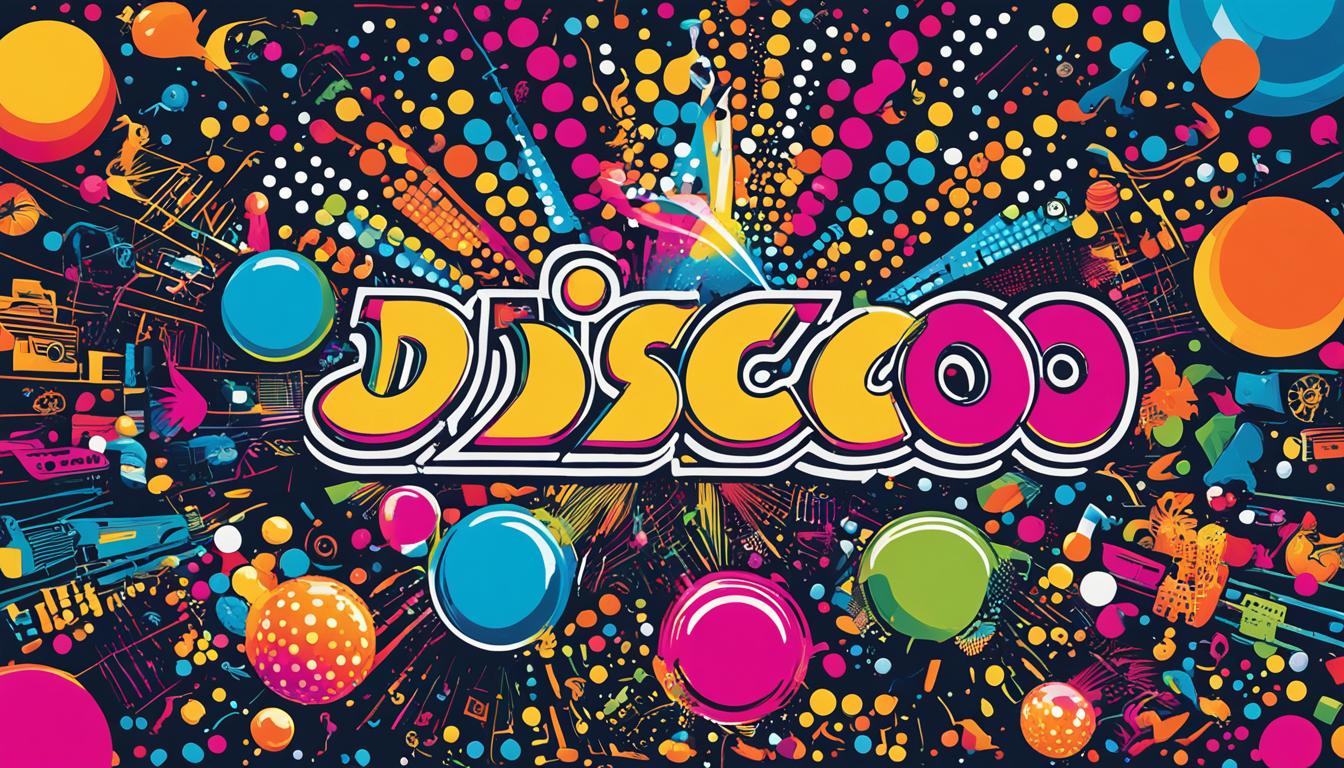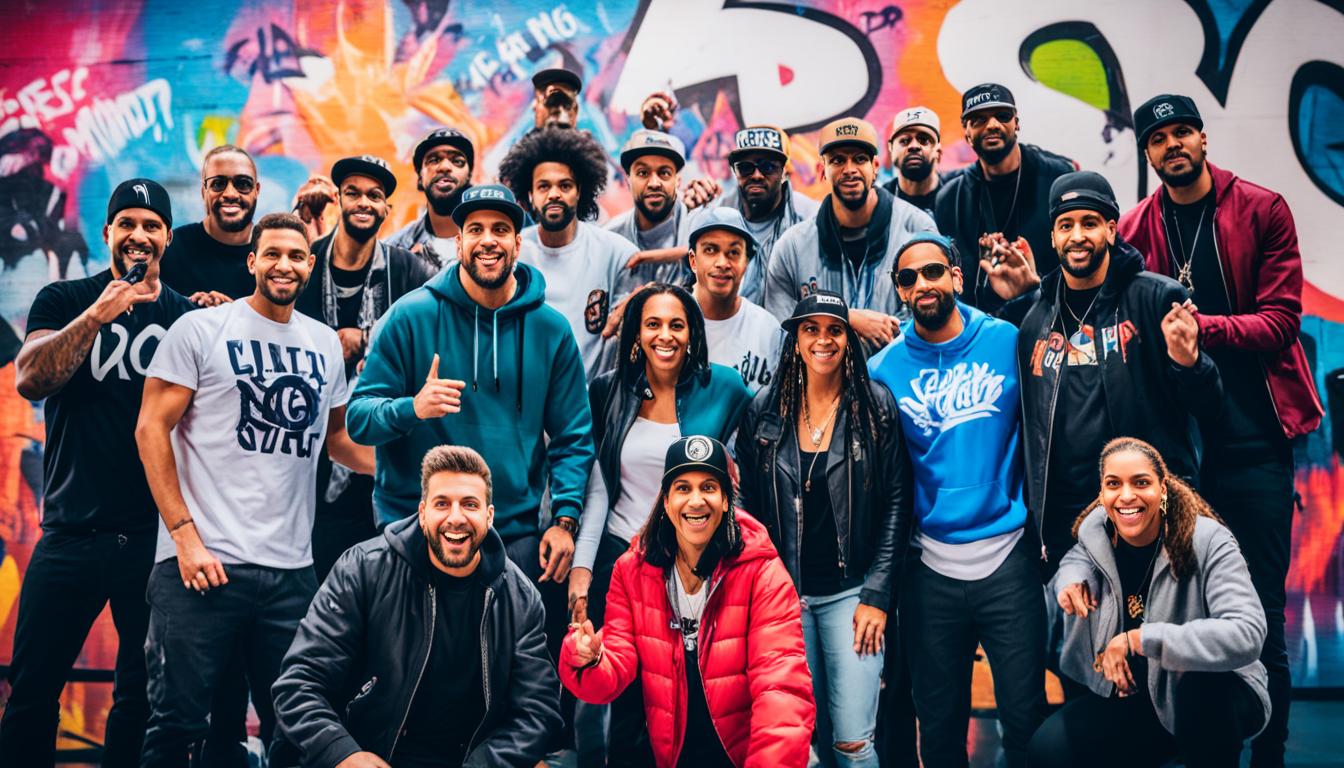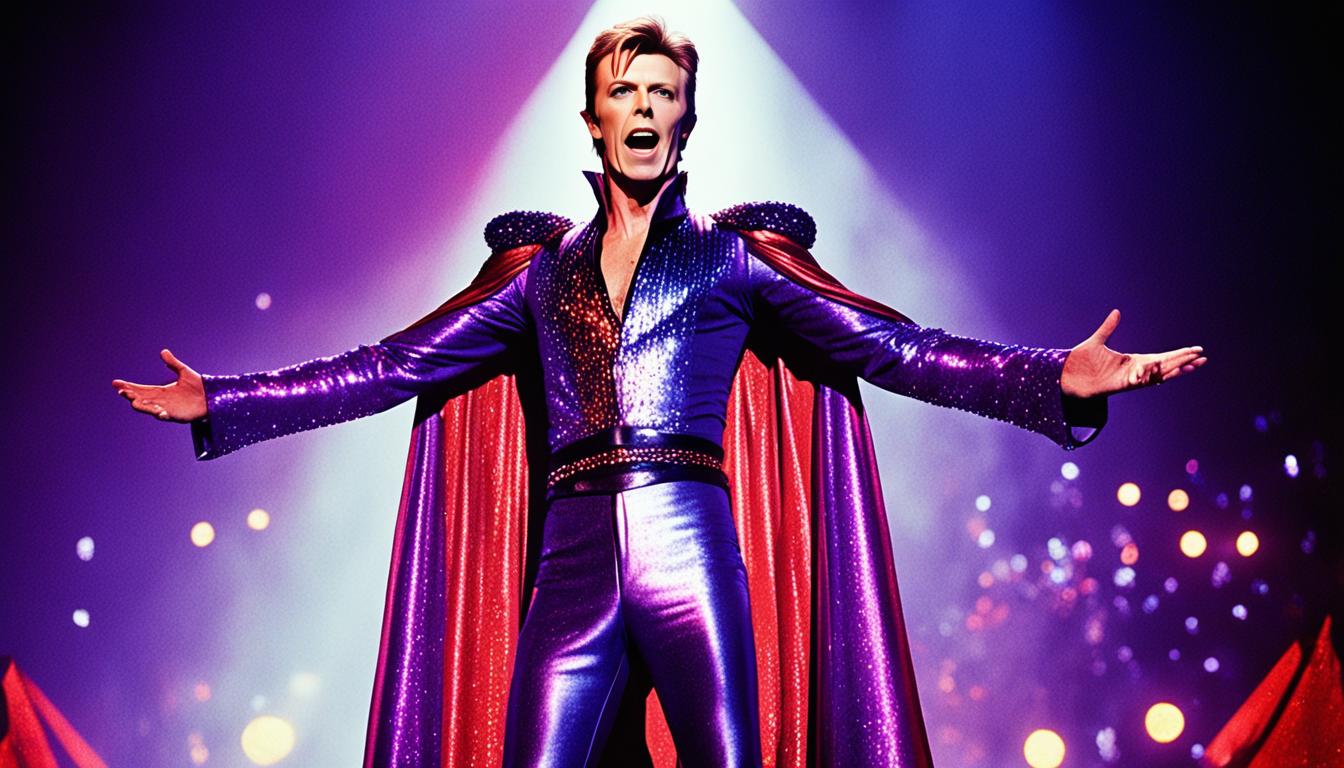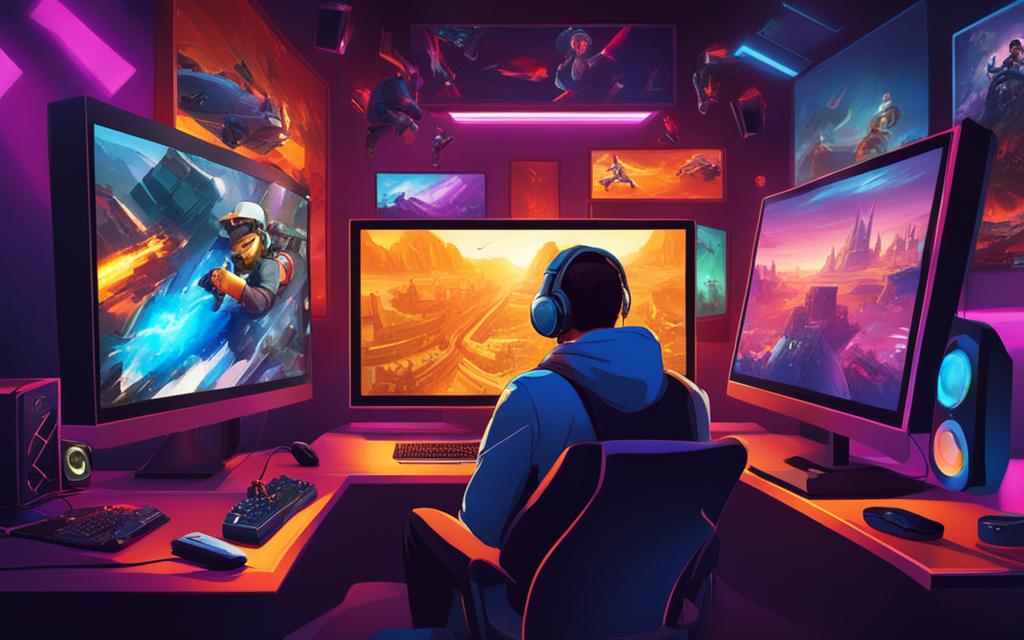Music genres and artists have always had a profound impact on our culture and society. From the groundbreaking artists who have shaped popular music genres to the emerging talents who are pushing the boundaries of creativity, music has played a vital role in reflecting and influencing our values, beliefs, and aspirations. In this article, we will explore the rich tapestry of music genres and artists throughout history, examining their role as cultural icons and their ability to shape and define the world we live in today.
From the resonant sounds of 1960s rock to the infectious beats of disco and funk in the 1970s, and from the glamorous pop legends of the 1980s to the rise of hip hop as a mainstream force, music genres and artists have captivated audiences and left an indelible mark on society. We will delve into each era, exploring the iconic musicians who have left an enduring legacy and examining how their music has transcended time and resonated with generations.
But it doesn’t stop there. We will also examine the evolving identities of music genres and artists over time. How have genres expanded from grassroots movements to global phenomenons? What personal struggles lie behind the scenes of artist biographies? We’ll pull back the curtain to reveal the dedication, passion, and determination required to succeed in the ever-changing music industry.
Furthermore, we will explore the impact of timeless albums and the lifespan of iconic records. How have classic albums influenced modern adaptations? What is the role of sampling classics and cover versions in bridging generations and pushing the boundaries of musical innovation? We’ll delve into the intricacies of musical evolution and the deep connection between past and present.
But it doesn’t end there. We’ll also take a closer look at the popularity landscape of music genres and the diverse styles that reflect our cultural complexity. From world music influences to fusion genres, we’ll explore the rich tapestry of musical expression and the powerful ways in which music transcends cultural borders.
In conclusion, music, culture, and society are intrinsically intertwined, and iconic musicians have the power to shape our collective identity. As we look to the future, we anticipate the next wave of iconic heroes who will continue to inspire, challenge, and redefine the very essence of music.
Key Takeaways:
- Music genres and artists have a profound impact on our culture and society.
- Each era has its iconic musicians who have left an enduring legacy.
- Music genres and artists undergo evolution and adaptation over time.
- Classic albums continue to influence modern adaptations and interpretations.
- Understanding the popularity landscape of music genres provides important insights into industry trends and listener preferences.
The Resonance of the 1960s: Music as a Social Mirror
The 1960s were a pivotal decade for music, with its diverse range of genres reflecting the sweeping cultural changes of the time. From the emergence of rock music to the influence of the British Invasion, the 1960s marked a transformative period in musical history.
The Beatles: Catalysts of the British Invasion
One of the most significant musical phenomena of the 1960s was the British Invasion, led by the iconic band, The Beatles. With their irresistible melodies and infectious energy, The Beatles captivated audiences worldwide and became a symbol of the era. Their music not only revolutionized popular culture but also inspired a generation of musicians and sparked a new wave of rock music.
Protest Music and the Hippie Movement: An Intertwined Legacy
Another notable aspect of 1960s music was its close association with the counterculture movement. Protest music, characterized by its socially-conscious lyrics and political themes, became a powerful medium for expressing dissent and promoting social change. It was closely intertwined with the hippie movement, which advocated for peace, love, and freedom. Artists like Bob Dylan, Joan Baez, and Joni Mitchell used their music to galvanize the masses and inspire a generation to question authority and fight for justice.
Psychedelic Rock and Surf Rock: The Sound of a New Era
The 1960s also saw the rise of two distinct and influential subgenres: psychedelic rock and surf rock. Psychedelic rock, characterized by its mind-altering soundscapes and experimental approach, reflected the spirit of the era’s counterculture and embraced themes of individuality and inner exploration. Artists like Jimi Hendrix, Jefferson Airplane, and The Doors pushed the boundaries of musical expression, creating a genre that mirrored the cultural and political changes of the time.
On the other hand, surf rock emerged as a soundtrack to youthful rebellion and carefree living. With its catchy guitar riffs and energetic rhythms, surf rock captured the essence of the beach lifestyle and symbolized the freedom and adventure associated with the era. The Beach Boys, Dick Dale, and Jan and Dean became synonymous with the genre, contributing to its enduring popularity.
Disco, Funk, and Punk: The Diverse Soundtracks of the 1970s
The 1970s was a decade of musical diversity, with various genres emerging and making their mark on the cultural landscape. Three genres, in particular, stood out in shaping the soundtracks of the era: disco, funk, and punk.

Disco music took the world by storm, becoming synonymous with dance and nightlife culture. With its infectious beats, funky basslines, and sensual lyrics, disco created a soundtrack that encouraged people to hit the dance floor and let loose. The disco scene also showcased extravagant fashion and glamorous style, with artists like Donna Summer, Bee Gees, and ABBA dominating the charts.
Funk music, with its groovy rhythms and psychedelic influences, addressed social issues while inviting listeners to embrace the rhythm. The genre featured prominent basslines, syncopated rhythms, and expressive horn sections. Funk legends like James Brown, Sly and the Family Stone, and Parliament-Funkadelic pushed the boundaries of musical experimentation, delivering messages of empowerment and unity through their infectious grooves.
Punk rock, on the other hand, emerged as a rebellious and energetic genre, capturing the frustration and disillusionment of the era. Punk bands like the Ramones, Sex Pistols, and The Clash used their music as a platform for social critique, challenging conventional norms and expressing a desire for change. Known for their raw energy, stripped-down sound, and political lyrics, punk rock brought a new level of intensity and urgency to the music scene.
In conclusion, the 1970s offered a diverse range of musical genres, each leaving a lasting impact on the cultural landscape. Disco, funk, and punk provided distinct and influential soundtracks that reflected the spirit and sociopolitical climate of the era.
Glamour and Escapism: The 1980s Pop Icons
The 1980s was a decade that brought forth a new wave of pop icons, taking the music world by storm with their unique style, captivating performances, and groundbreaking contributions. This era was characterized by a sense of glamour and escapism, as artists pushed boundaries and challenged societal norms, leaving a lasting impact on popular culture.
Michael Jackson and the MTV Revolution
One of the most influential figures of the 1980s music scene was Michael Jackson. Through his innovative music and electrifying performances, Jackson captivated audiences worldwide and revolutionized the music video industry. His collaborations with MTV resulted in visually stunning videos that brought his music to life in unprecedented ways, captivating viewers and elevating the artistry of music videos to a new level. The MTV Revolution, spearheaded by Jackson, transformed the way music was consumed and visualized, creating a powerful platform for artists to showcase their creativity and connect with audiences on a deeper level.
Madonna and Prince: Reinventing the Pop Star Persona
Two other iconic artists who left an indelible mark on the 1980s pop music landscape were Madonna and Prince. These trailblazers challenged conventional norms and reinvented the pop star persona, paving the way for future generations of artists to embrace their individuality and push creative boundaries. Madonna, with her provocative lyrics, daring performances, and fearless approach to self-expression, became a feminist icon and an embodiment of female empowerment. Prince, on the other hand, captivated audiences with his unique blend of rock, funk, and R&B, showcasing his virtuosity as a multi-instrumentalist and pushing the boundaries of gender and sexuality in his art.
The 1980s pop icons transformed the music industry and influenced generations to come. Through their music, performances, and fashion choices, they inspired artists to embrace their individuality, challenge societal norms, and push creative boundaries. Their impact can still be felt today, as their contributions continue to shape the landscape of popular music.
Breaking Barriers: The Rise of Hip Hop and Rap in Mainstream Music
The rise of hip hop and rap in mainstream music marked a cultural shift, as the genre broke barriers and gave a voice to marginalized communities. Hip hop originated in African-American and Latino communities, addressing social issues and celebrating cultural identity. Rap, with its rhythmic beats and lyrical storytelling, became a powerful means of expression, shedding light on the realities of urban life and pushing for social change.
“Hip hop is more than just music. It’s a culture that encompasses various art forms, fashion, dance, and language. It emerged as a form of self-expression and empowerment for communities that were long overlooked in mainstream media.”
As hip hop gained widespread popularity, it transcended boundaries and became a dominant force in mainstream music, influencing other genres and shaping popular culture. Today, hip hop culture continues to evolve and thrive, incorporating new sounds, styles, and voices.
To further explore the impact of hip hop and rap in mainstream music, let’s take a closer look at the key elements that make this genre unique:
| Key Elements of Hip Hop and Rap | Description |
|---|---|
| Lyrics | Rap lyrics are often characterized by their storytelling nature, addressing social and personal topics with raw honesty. |
| Rhythmic Beats | The rhythmic beats of hip hop create an infectious energy, setting the backdrop for rap verses and providing a platform for self-expression. |
| Sampling | Hip hop artists often sample and remix older songs, giving them a new life and creating a bridge between generations. |
| Cultural Identity | Hip hop celebrates cultural diversity and acts as a platform for marginalized voices, providing a space for artists to express their identity and experiences. |
Through its powerful lyrics, infectious beats, and celebration of cultural identity, hip hop and rap have made an indelible mark on mainstream music and continue to shape the musical landscape. As the genre evolves, it remains a testament to the resilience and creativity of artists who break barriers and pave the way for future generations.

Music Genres and Artists: Evolving Identities Through Time
Music genres and artists have always been in a state of constant evolution, adapting to the ever-changing societal and cultural landscape. From their grassroots beginnings, certain genres have transcended boundaries and achieved global recognition, connecting people from different regions and cultures through the power of music.
From Grassroots to Global: The Cultural Expansion of Music Genres
Over time, music genres have expanded their influence far beyond their original roots. From the local scenes of jazz clubs and underground hip hop battles, genres like jazz, hip hop, and reggae have become global phenomenons, with fans and artists from all corners of the world embracing their unique sounds and cultural expressions. The ability of music genres to resonate with listeners on a universal level is a testament to the power of music to connect people and foster understanding across diverse cultures.
“Music knows no boundaries. It speaks to the soul and unifies people, regardless of their language or background.” – Unknown
Artist Biographies: Personal Struggles Behind the Scenes
Behind the glamorous facade of the music industry, artists often face numerous personal struggles and challenges on their journey to success. Artist biographies provide a glimpse into the untold stories of dedication, passion, and determination that lie behind the scenes. These narratives reveal the sacrifices made, the moments of self-doubt, and the relentless pursuit of their craft, shedding light on the human side of the artists we admire.
Through artist biographies, we learn about the triumphs and setbacks, the moments of creative breakthroughs and the hard-fought battles against obstacles. These stories serve as inspiration, reminding us that the path to success is rarely linear and that true artists are driven by an unwavering commitment to their craft.
As we delve into the stories of beloved musicians, we gain a deeper appreciation for their artistry and a profound understanding of the resilience it takes to thrive in the ever-changing music industry.
Iconic Musicians and Their Legacies: David Bowie’s Transcendent Influence
David Bowie is widely regarded as a musical icon, leaving behind a transcendent influence on the music industry. Known for his chameleon-like ability to reinvent himself and experiment with different musical styles, Bowie pushed boundaries and challenged conventions. His innovative approach to music and performance continues to inspire and influence artists to this day.

The Indie Music Scene: A Haven for Emerging Music Artists
The indie music scene provides an invaluable platform for emerging music artists to showcase their talent, creativity, and unique perspectives. As the mainstream industry becomes increasingly saturated, independent musicians find solace and freedom in the indie music scene, where they can experiment with their sound, push creative boundaries, and craft their own identity in a crowded market.
New Music Trends: Crafting Identity in a Crowded Market
In the indie music scene, artists have the freedom to explore and embrace new music trends that are both authentic to their artistic vision and resonate with their target audience. This fearless approach to music creation allows for the discovery and cultivation of fresh sounds, genres, and styles that challenge established norms and captivate listeners.
From blending genres and incorporating unconventional instruments to experimenting with production techniques and exploring unique lyrical themes, indie artists are at the forefront of pushing the boundaries of musical expression. By crafting their identity through new music trends, they create a distinct and captivating artist persona that sets them apart.
Indie Heroes: How Lesser-Known Artists Impact Modern Music Movements
While the indie music scene may be characterized by its underground nature and lesser-known artists, the influence of these indie heroes cannot be underestimated. They play a vital role in shaping modern music movements and driving the evolution of the industry as a whole.
Indie artists often serve as trendsetters, introducing fresh sounds, innovative production techniques, and unique perspectives that inspire and influence their peers in the broader music landscape. Their contributions to modern music movements pave the way for new genres to emerge, challenge traditional structures, and redefine what it means to be a successful musician in the digital age.
Moreover, these indie heroes often act as cultural tastemakers, championing social and political causes, and providing a voice for marginalized communities. Their music becomes a platform for social commentary, sparking important conversations and driving positive change.
Overall, the indie music scene nurtures and fosters a diverse range of emerging music artists, allowing them to thrive, innovate, and impact the modern music industry. As the indie music community continues to grow and evolve, its influence will undoubtedly shape the direction of music for years to come.

Classic Albums and Modern Adaptations: The Lifespan of Iconic Records
Classic albums have withstood the test of time, cementing their status as influential and beloved creations among music enthusiasts. These iconic records continue to resonate with audiences, inspiring admiration and reverence decades after their original release. However, their lifespan extends beyond their initial debut, as they often serve as a source of inspiration for modern adaptations and reinterpretations.
Sampling Classics: A Bridge Between Generations
In the realm of music, sampling classics has become a popular approach to pay homage to iconic records and bridge the gap between different generations of listeners. Sampling involves using snippets or elements of previously recorded songs to create new compositions. By incorporating recognizable samples from classic albums into contemporary tracks, artists create a sense of familiarity and nostalgia while infusing their own unique style and artistic vision.
This practice allows younger audiences to discover and appreciate the musical heritage left behind by previous generations. It serves as a reminder of the timelessness and enduring influence of these iconic records, ensuring their legacy lives on and remains relevant in the ever-evolving landscape of music.
Cover Versions: Homage or Innovation?
In addition to sampling, artists often choose to reinterpret classic albums through cover versions. Cover versions involve artists performing and recording their own renditions of well-known songs originally created by other musicians. This practice presents an opportunity for artists to put their own unique spin on a familiar song, offering a fresh perspective and adding their distinct artistic expression.
Cover versions can serve as a homage to the original artists, showcasing the impact and enduring popularity of their work. At the same time, these reinterpretations can also be an avenue for innovation, allowing artists to experiment with different musical styles and arrangements, breathing new life into beloved compositions. By blurring the lines between homage and innovation, cover versions contribute to the ongoing evolution and reinterpretation of classic albums, forging connections between past and present.
Both sampling classics and cover versions are testament to the timeless appeal and influence of iconic records. They provide a gateway for artists to pay respect to their musical predecessors while contributing to the ever-expanding tapestry of music, further intertwining the past, present, and future.
Top Music Genres: Charting the Popularity Landscape
Charting the popularity landscape of music genres provides us with valuable insights into the ever-evolving tastes and preferences of listeners. From rock and pop to hip hop and electronic, different genres have experienced fluctuating levels of popularity over the years, influenced by cultural shifts and changing industry trends.
Understanding these music industry trends is crucial for artists and industry professionals alike, as it allows them to navigate the dynamic and ever-changing music landscape more effectively. By staying attuned to the current popularity landscape, music creators can make informed decisions about their artistic direction, promotional strategies, and genre crossovers, ultimately enhancing their chances of reaching a broader audience.
Moreover, studying the popularity landscape can also provide valuable insights into the cultural zeitgeist and societal trends. Music genres often mirror and reflect society’s values, desires, and aspirations, making them powerful cultural indicators. By analyzing the popularity landscape, we gain a deeper understanding of how music is intertwined with broader cultural dynamics and aspirations, allowing us to recognize the ways in which music genres continually shape and respond to our ever-changing world.
Diverse Music Styles: A Reflection of Cultural Complexity
Diverse music styles embody the rich tapestry of cultural influences found across the globe. Through the fusion of various genres and the incorporation of unique musical traditions, artists craft a vibrant mosaic that mirrors the complex fabric of societies worldwide. From traditional folk melodies to contemporary beats, music serves as a conduit for cultural expression and exploration.
World Music Influences on Mainstream Genres
In the ever-evolving landscape of mainstream music, world music exerts a profound influence on artists and genres. Musicians often draw inspiration from diverse cultures and integrate elements such as distinctive rhythms, instruments, and vocal styles into their compositions. This cross-pollination of musical ideas results in captivating and groundbreaking tracks that resonate with global audiences.
World music influences can be observed in genres as diverse as pop, rock, and electronic music. Artists like Paul Simon and Peter Gabriel have incorporated world music elements, bringing the sounds of Africa and other regions into the mainstream. These cross-cultural collaborations not only introduce listeners to new sonic experiences but also foster cultural understanding and appreciation.
Fusion Genres: When Cultures Collide through Music
In the realm of music, creativity knows no boundaries. Fusion genres emerge when cultures collide, giving rise to innovative and genre-defying sounds. Artists push the boundaries of traditional genres, blending elements from different musical traditions to create unique and eclectic compositions.
Fusion genres bridge the gaps between styles, blending jazz with hip hop, rock with classical, or reggae with electronic music, among countless other combinations. This intermingling not only creates groundbreaking sonic experiences but also sparks cultural exchange and dialogue.
Through fusion genres, musicians challenge conventions and dismantle limitations, creating music that transcends traditional genre classifications. These genre-bending collaborations not only captivate audiences but also serve as a testament to the power of music in connecting people from different backgrounds and nurturing cultural diversity.
Music Category Breakdown: Understanding the Genre List
Understanding the genre list and categorization of music is essential for music enthusiasts and industry professionals. The genre list provides a framework for classifying and organizing music based on common stylistic and thematic characteristics. From mainstream genres like rock, pop, and hip hop to subgenres and niche categories, the genre list helps us navigate the vast landscape of musical styles.
Exploring the music categories allows us to appreciate the diversity and richness of different genres. Each category has its own unique characteristics and influences, reflecting the cultural and historical context in which it emerged. Whether you’re a fan of classical music, jazz, electronic, country, or any other genre, understanding the underlying classification system enhances our understanding and appreciation for the music we love.
Take a look at the table below, which provides an overview of some popular music categories:
| Music Category | Description |
|---|---|
| Rock | A genre characterized by guitar-driven music, featuring energetic rhythms and often accompanied by powerful vocals. |
| Pop | A genre focused on popular, catchy melodies with a broad appeal, often incorporating elements of other genres. |
| Hip Hop | Originating from urban communities and known for its rhythmic beats and lyrical storytelling. |
| Electronic | A genre that heavily relies on electronic instruments and technology to create its sound. |
| Jazz | A genre rooted in improvisation and characterized by complex harmonies and unique rhythmic patterns. |
| Country | A genre originating from rural communities, often featuring storytelling lyrics and traditional instrumentation. |
While these are just a few examples, the genre list encompasses a wide range of music styles and subgenres. Exploring different genres can open up new musical horizons, allowing us to discover artists and songs that resonate with our individual tastes and preferences.
In the ever-evolving landscape of music, the genre list serves as a guide, helping us navigate the vast array of musical offerings and providing a common language for music enthusiasts and industry professionals alike.
Conclusion
Music, culture, and society are intrinsically linked, creating a timeless interplay that shapes and influences one another. Throughout history, iconic heroes of the music industry have left a lasting impact, not only on the cultural landscape but also on the lives of individuals. From the Beatles to Michael Jackson, these artists have defined and redefined the boundaries of music, pushing the limits of creativity and inspiring generations.
Looking ahead, the future of music holds exciting possibilities. As technology continues to advance, new harmonies will emerge, and the next wave of iconic heroes will rise. These future musicians will bring fresh perspectives, breaking boundaries and revolutionizing the way we experience music. They will continue to define our cultural landscape, challenging societal norms and addressing the pressing issues of our time.
As music enthusiasts and industry professionals, we eagerly anticipate the transformative power of these future harmonies. The connection between music, culture, and society will continue to shape our collective identity and offer a profound means of expression. The journey of music as a cultural icon is never-ending, and we stand on the brink of a new era of innovation, creativity, and inspiration. Together, let us embrace the power of music to unite, inspire, and shape our world.
FAQ
How have music genres and artists influenced society throughout history?
Who were the influential artists and music movements of the 1960s?
What were the prominent music genres of the 1970s?
Who were the pop icons of the 1980s?
What impact did hip hop and rap have on mainstream music?
How have music genres and artists evolved over time?
Who is David Bowie and why is he considered a musical icon?
How does the indie music scene impact the music industry?
How do classic albums remain influential over time?
Which music genres have been popular throughout history?
How do diverse music styles reflect cultural complexity?
How are music genres categorized and classified?
How do music, culture, and society influence one another?
Source Links
- https://www.loadmag.eu/2022/09/12/the-power-of-music-cultural-influence-throughout-the-decades/
- https://www.reddit.com/r/LetsTalkMusic/comments/1873do5/do_you_think_david_bowie_had_a_singular_role_in/
- https://www.broadwayinbound.com/blog/rhythm-rhyme-and-revolution-the-hiphop-jazz-and-rnb-renaissance-on-broadway-through-the-musical-hamilton



